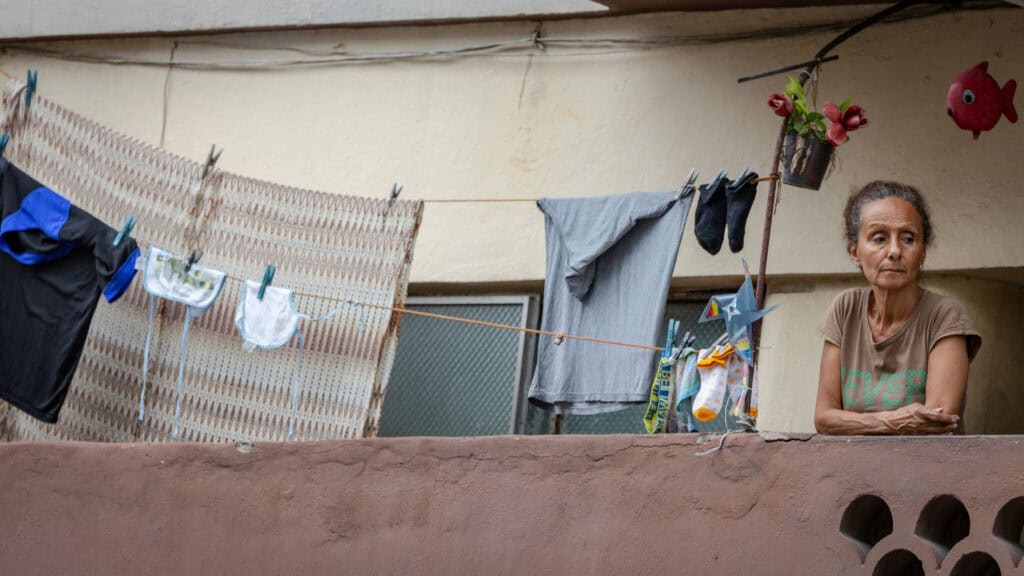The emotional and psychological effects of discrimination are familiar to anyone who’s ever been treated differently because of who they are. The damage that stress can do to the human brain has been widely understood for decades. Research on how living in poverty has similar effects on the human brain to pulling an all-nighter every night has received widespread coverage over the past decade.
But as familiar as these specific concepts may be, the broader impact of interpersonal mistreatment and material deprivation upon our physical health is still widely underappreciated. Structural oppression – both social and economic – has measurable effects on individual people’s health outcomes, and therefore on the collective public health challenges that shape society for everyone.
Public health researchers and health equity policymakers are continually investigating these complex interactions. One of the terms that these experts have begun using to explain their work is “weathering.”
Weathering is a concept in public health research that compares the human body to a structure exposed to harsh environmental conditions over time. Just as a building may deteriorate under constant exposure to severe weather, marginalized people’s bodies are harmed by the corrosive effects of systemic oppression from factors like discrimination, poverty or ongoing adversity. The term “weathering” is used as shorthand for one hypothesis of why individuals facing persistent stressors typically experience more frequent or severe health issues.
Understanding the Weathering Hypothesis
The concept of “weathering” represents a critical intersection of public health and social justice, offering insight into the cumulative impact of chronic stress, societal bias and discrimination on individual health outcomes. Developed by public health researcher Arline Geronimus, the weathering hypothesis explains why systemic inequalities can lead to accelerated health deterioration over time, particularly among marginalized communities. This understanding underscores the necessity of considering health as a fundamental component of community economic development strategies and vice versa.
The Mechanics of Weathering
Weathering is rooted in the prolonged exposure to socio-economic adversity and political marginalization, primarily affecting racial minorities and economically disadvantaged groups. This exposure triggers a chronic stress response that maintains elevated levels of stress hormones, such as cortisol. Prolonged hormonal imbalance can disrupt bodily systems, leading to what is termed “allostatic load”—the wear and tear on the body that accumulates as an individual is exposed to repeated or chronic stress. This phenomenon is evident in higher incidences of conditions like hypertension, diabetes and cardiovascular diseases at younger ages in these populations compared to more advantaged groups. Further, the prolonged conditions of chronic stress impact childhood development, critical thinking and mental deterioration in adults and even genetic expression.
Strategic Integration of Health Concepts into Community Development
Integrating the concept of weathering into community development strategies is not just about alleviating health disparities—it’s about fostering long-term community resilience and economic stability. Each year the US economy leaves nearly $500 million in growth unrealized because of health disparities. By understanding and addressing the social determinants of health, community developers can advocate for comprehensive strategies that promote not only economic prosperity but also equitable health outcomes.
For instance, community planning that incorporates green spaces, safe pedestrian areas, and accessible recreational facilities can reduce environmental stressors and promote physical activity, which in turn can mitigate some effects of chronic stress and improve overall community health while also creating the community amenities needed to help increase homeowners’ property value and attract additional capital into the community.
Because weathering is a holistic, systems-driven understanding of life inputs and life outcomes, it naturally points toward holistic, systems-driven solutions. To break the cycles of exclusion, poverty and unhealthiness that weathering describes requires a collaborative approach that involves stakeholders from various sectors including healthcare, education, housing and economic development. Such cross-sectoral partnerships are essential in designing interventions that tackle the comprehensive nature of weathering and its wide-reaching implications.
How to Use the Weathering Hypothesis in Making Change
The weathering hypothesis provides a crucial framework for understanding how systemic inequalities impact health and highlights the importance of integrating health considerations into community and economic development strategies. By addressing the root causes of weathering, development professionals can not only improve health outcomes but also create more vibrant, equitable, and sustainable communities. It is imperative that we continue to foster dialogue and action that bridges the gap between public health and community development, ensuring that all individuals have the opportunity to live healthy, productive lives free from the burdens of systemic bias and chronic stress. Now you have a simple, compelling, one-word metaphor that can help you bring those conversations to life in your own community.
Devin Thompson is NCRC’s Director of Health Equity and Impact.
Photo via Alex Proimos on Flickr.



